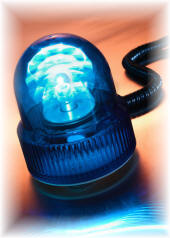How To Clean Up A Methanol Spill
Chancy CHEMICAL SPILLS & EMERGENCY RESPONSE PROCEDURES
A. Definition of Chemical Spills - Emergency & Non-emergency
The range and quantity of hazardous substances used in laboratories require preplanning to respond safely to chemical spills. The cleanup of chemic spills should only be accomplished past knowledgeable and experienced people. Spill kits with instructions, absorbents, reactants, and protective equipment should be available to clean up minor spills.
safely to chemical spills. The cleanup of chemic spills should only be accomplished past knowledgeable and experienced people. Spill kits with instructions, absorbents, reactants, and protective equipment should be available to clean up minor spills.
Three factors determine if a hazardous materials spill is a non-emergency or an emergency.
- How much was spilled - if the amount of the textile spilled is more than than 1 liter, it is considered a major spill and you should contact the Chemic Safe Role for assistance.
- What are the hazards of the textile spilled - if the spill is less than i liter, merely presents an firsthand danger to health, rubber, the surround, or is an immediate fire gamble, it is considered a major spill and you should follow Emergency Response Procedures for Chemical Spills.
- Where is the Spill - if the spill is outside of the laboratory or outside of the surface area where the material is normally used, and/or there is no trained person available to make clean up the spill, yous should contact the Chemical Safe Office for aid.
Note: All laboratory workers, or persons using hazardous materials must be trained in how to clean upwards the materials they are using. Spill Kits are required in all areas where chemicals are used or stored - employees who work in those areas must be trained in how to use the kits and in how to actuate the Emergency Response Procedures for Major Spills.
B. Non-Emergency - Minor Chemic Spill
Small spills (< ane Liter and does not present an firsthand fire, safe, environmental or health run a risk).
- Alert people in immediate area of spill.
- Wear protective equipment - including safe goggles, gloves, long-sleeve lab glaze.
- Avoid breathing vapors from the spill.
- Confine spill to modest surface area.
- Use appropriate kit to neutralize and absorb inorganic acids and bases. Collect remainder, place in container , fill out blue waste matter tag, and contact the Chemical Safety Office at ext. 1-2663 for disposal..
- For other chemicals, use appropriate kit or absorb spill with vermiculite, dry out sand, or diatomaceous world. Collect residue, place in container and dispose as chemic waste product.
- Clean spill area with h2o.
C. Spill Kits:
Chemical Spill Kits shall be bachelor in the laboratory. The contents of the kit should include materials for cleaning upwards a spill for all chemicals in the lab such as:
- Chemical Resistant Gloves
- Neutralizing agents for acids and bases
- Absorbents for highly reactive acids and flammable solvents
- Polyform F if you have aldehyde solutions in the lab
- Scraper and Scoop for collecting captivated materials
- Hazardous Material Disposal bags or containers for collecting spill materials for disposal
Commercial spill kits are available that have instructions
D. Emergency Response Procedures - Major Spill
Large Spills (> ane Liter or a textile presents an immediate burn, condom, environmental, or health hazard regardless of quantity). Examples: Spill of greater than 1 Liter of ethanol, methanol, potent acids or bases or any quantity of highly volatile organics, and mercury compounds.
- End work
- Turn off any ignition sources
- Attend to any injured persons - if you tin can do then without personal run a risk. Call 1-2911 to evacuate injured persons.
- Get out laboratory hood on
- Evacuate laboratory and close door
- Secure lab, i.e., keep others out of the lab
- Call Chemical Safety at ext. ane-2663 during normal working hours - off hours, weekends, and holidays call Campus Public Safety at ext. 1-2911 Response Arrangement
- Remain near lab until help arrives
REQUIRED POSTINGS FOR EMERGENCY RESPONSE
The following telephone numbers are to be posted in all laboratories and/or chemical storage facilities where all other condom information is displayed.
Emergency Telephone Numbers:
- Public Safety Division
706-721-2911 - Fire Safety Services
706-721-2663 - Environmental Wellness & Safety Sectionalization
706-721-9826 - Chemical/Biological Safety Part
706-721-2663 - Industrial Hygiene and Safety Office
706-721-2663 - Radiation Safe Function
706-721-9826 - Facilities Direction Division
706-721-3477 - Work Direction Center
706-721-2434 - Augusta University'south Emergency Response Arrangement can be activated by calling:
Public Safe Division at ext. i-2911.
When at that place is a threat to human being health or life, and/or institutional property, telephone call Public Safety at ext. 1-2911. Public Safety personnel volition contact the Departments responsible for managing each state of affairs.
How To Clean Up A Methanol Spill,
Source: https://www.augusta.edu/services/ehs/chemsafe/splprc.php
Posted by: johnsonbigod2001.blogspot.com


0 Response to "How To Clean Up A Methanol Spill"
Post a Comment